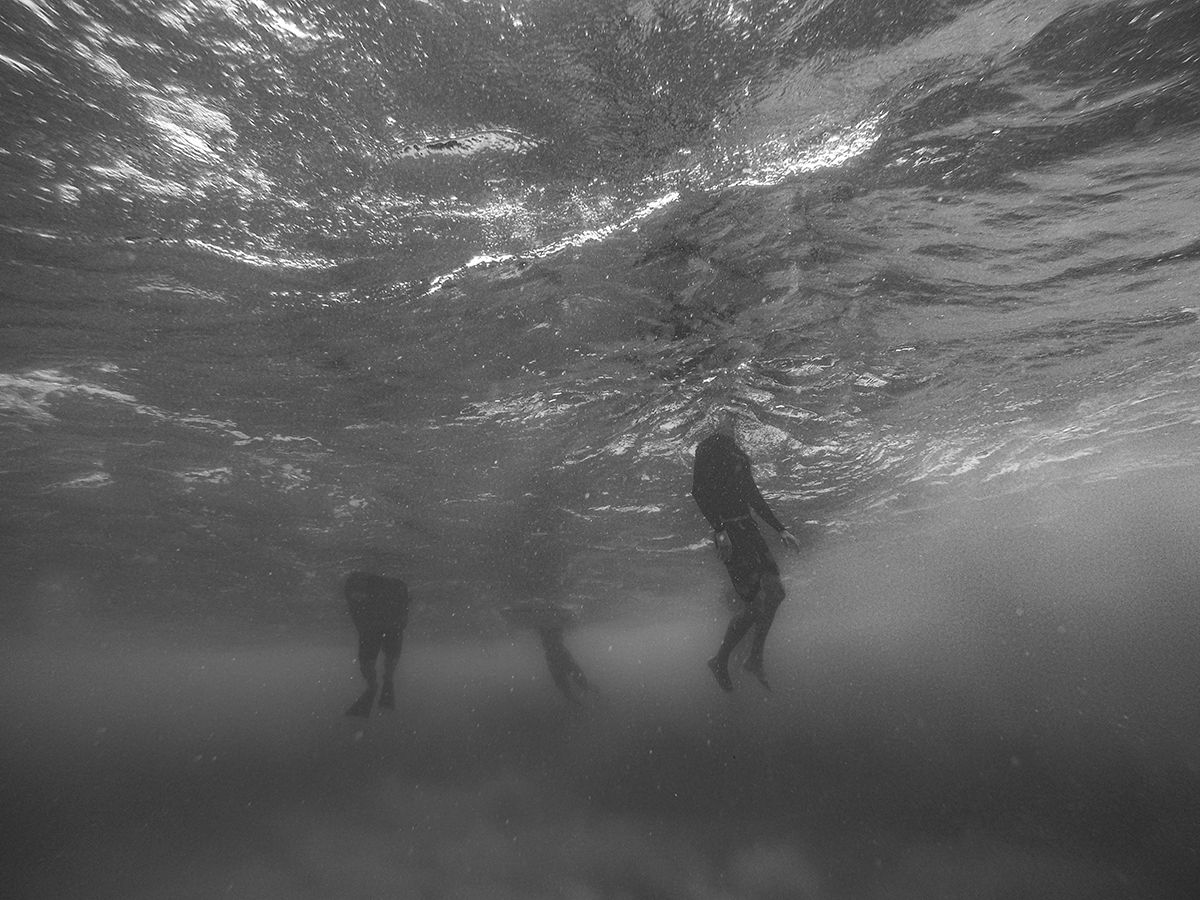Do Wetsuits Make You Float?
John Wolfe March 19th, 2019 Posted In: Articles
To Buoy or Not To Buoy: Do Wetsuits Make You Float?
Maybe you’re a surfer, scoping out some January barrels to shred. Or a triathlete, with a long, daunting, open-water swim ahead of you. Perhaps you’re planning to dive a wreck offshore; on the surface it’s seventy degrees and sunny, but you know that below the thermocline, the temperature quickly drops. In all three of these examples, you’ll need to wear a wetsuit. Wetsuits are worn for a variety of activities, but always for the same reason: to keep you warm in cold water.
Wetsuits also come with a set of properties and principals that are important to become familiar with before putting them to use in the water. Perhaps it’s most important to know the answer to one simple question: do wetsuits make you float?
The answer to that question is… sort of. Any wetsuit will give you some additional flotation. The thicker the suit, the more float it provides. It’s important to keep in mind that a wetsuit won’t provide as much buoyancy as devices that are specifically designed to be an aid to flotation, like a lifejacket or a throw-able cushion or life ring. Nor should they be used for such purposes. Let’s take a look at why.
How Does a Wetsuit Help You Float?
 The ancient Greek physicist Archimedes never wore a wetsuit, but a theory he developed explains how they affect whether or not they will make you float. Way back in 250 B.C., Archimedes made the proposition that any object, totally or partially immersed in a fluid, is buoyed up by a force equal to the weight of the fluid displaced by the object. The neoprene material the modern wetsuit is made of weighs significantly less than an equal volume of water; therefore, when placed in water, the wetsuit will always float.
The ancient Greek physicist Archimedes never wore a wetsuit, but a theory he developed explains how they affect whether or not they will make you float. Way back in 250 B.C., Archimedes made the proposition that any object, totally or partially immersed in a fluid, is buoyed up by a force equal to the weight of the fluid displaced by the object. The neoprene material the modern wetsuit is made of weighs significantly less than an equal volume of water; therefore, when placed in water, the wetsuit will always float.
When a person wears a wetsuit, the displacement of the wetsuit is combined with the displacement of the person. Each person is different – some people float easily, while some have to tread water to keep from sinking. But a wetsuit will always provide some additional buoyancy, helping the person wearing it to float too.
Logically, it follows that the thicker the wetsuit is, the more flotation it has. The more neoprene you wrap yourself in, the warmer and more buoyant you will be. A full-length 5mm wetsuit designed for serious cold conditions, like the Akona Quantum Stretch, will offer you significantly more flotation than a thinner shorty springsuit. Be sure to choose your wetsuit carefully for the conditions you’ll be wearing it in. It’s always best to err on the side of caution. Wouldn’t you rather have warmth to go around than not enough to spare?
SCUBA Diving
Keeping this in mind, it’s important to know how much buoyancy the wetsuit will provide for you, especially for activities like SCUBA diving. In colder environments, when a thicker wetsuit is necessary for comfort and safety, a diver will have to increase the amount of weight they wear on their weight belt. A diver is ideally aiming for neutral buoyancy. This is the ability to remain at a specific depth in the water column, without sinking or floating.
Surfing
While surfing, on the other hand, you might not care as much about buoyancy, as you are strapped to a foam-filled board which floats pretty well on its own. But if the leash breaks and you have to swim a long way to shore, or the biggest wave from the set pummels you and holds you under, you might find yourself thankful for that extra little bit of flotation assist the wetsuit provides. Before wetsuits became widely available after being developed for frogmen in World War Two, surfers in colder climates would paddle out wearing knit garments of thick wool. They probably weren’t very comfortable, or effective, and almost certainly soaked up water like a sponge. Thankfully, those chilly days are over. Modern neoprene wetsuits are far warmer and more comfortable.
Triathlon
People who compete in triathlons will appreciate the extra lift a wetsuit provides. Not having to worry about swimming ‘up’ as well as ‘forward’ makes it easier to swim longer distances; triathlon wetsuits are actually designed with extra buoyancy in strategic areas, which can position your body in a certain orientation in the water – providing a competitive edge over someone wearing a different wetsuit, or no wetsuit at all.
So does a wetsuit make you float? The short answer is yes, it does – but not as much as a life jacket. They might assist in flotation, but do not outright provide it. Whatever activity you use a wetsuit for, they’ll help you float – and keep you warm while doing it.


Can I sleep on the ocean while floating with the wetsuit?
We wouldn’t recommend it for safety reasons. While wetsuits provide some flotation, they don’t take the place of a life saving flotation device.
I am look to go surface snorkeling. Will this help me stay a float on top of the water?
Hi John – perhaps you should also address the issue of diving and dive depth, as the foam is compressed as depth increases, decreasing the insulation, and decreasing the buoyancy. Thanks – Barney TN